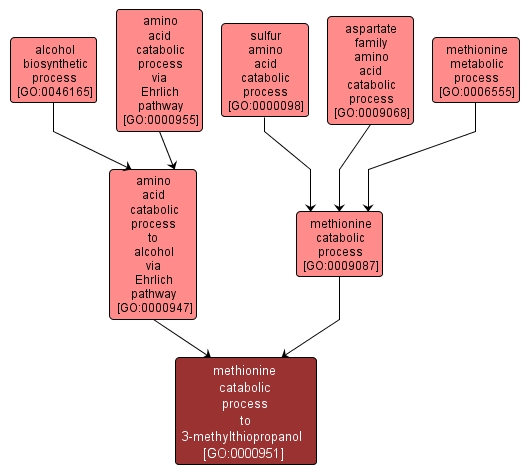| Desc: |
The chemical reactions and pathways involving the catabolism of branched chain amino acids to produce branched chain alcohols with one carbon less than the starting amino acid. In S. cerevisiae, this is known to occur for leucine, isoleucine, valine, methionine, phenylalanine, tyrosine, or tryptophan. When methionine is used as the substrate, 3-methylthiopropanol is produced. Often referred to as the Ehrlich pathway, these reactions generally occur during fermentation to produce a variety of alcohols, often collectively referred to as fusel alcohols. Depending on the redox state of the cells, carboxylic acid derivatives may be produced instead of alcohols. |














